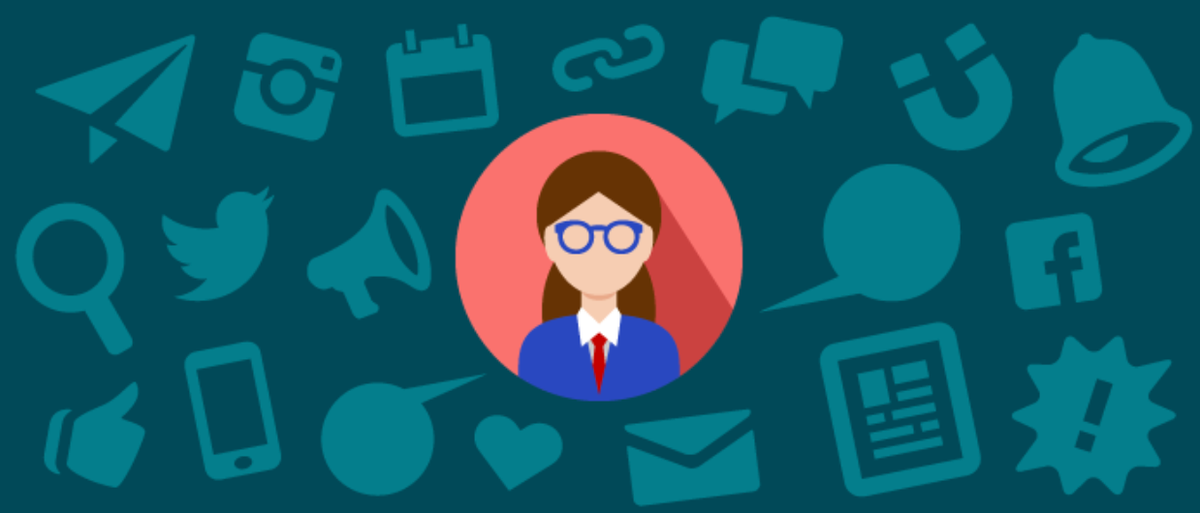Introduction

If your business sells services, or knowledge, if you are an educator, trainer, coach, mentor or have specialist skills, or if you have a product that has some complexity that presents a barrier to instant access by your target market, using webinars to connect with your customers and clients may give your business a significant advantage.
Webinars offer a host of benefits for you and your business, especially if you are looking to grow your customer base outside your immediate geographical location. You can think of a webinar as basically an online seminar, hosted on the web. It involves video, audio and usually overlaid visuals through slides and screen shots to communicate information, all able to be experienced from anywhere your participants have internet access and a suitable device.
Webinars are used frequently by thought leaders and service providers as a way to value add their offering, or to introduce people to them and their services or products. They are relatively inexpensive to produce, can be done from your home or office, and when done in a way that captivates your market, can exponentially build your customer data base and revenue. Let’s cover some of the key tools and platforms to get you started, how to create dynamic content, then look at some ways you can market Webinars to build your business.
How to host a webinar.

There are basic tools you'll need to own or have access to, before you can effectively host a webinar, these include:
- A reliable microphone: this doesn’t have to be a John Laws gold plated model, but the better quality your mic, the better experience your audience will have. As voice is your key tool here, it pays to make it clear. A USB microphone is best practice, or a USB headset with a microphone. These are readily available at computer and tech stores and anywhere you get computing accessories. Using a VoIP phone handset is not suitable for broadcasting a webinar, only for listening in. Apple airpod or earpod headphones with mic are a high enough quality too.
- High speed internet connection: Slow internet is going to impact on your presentation and is a real barrier to audience enjoyment and participation. Strive for the fastest broadband Internet connection because network speed affects audio and visual quality. From a webinar audio perspective, a slow network connection or a dial-up connection can be the source of dropped words, delays or robotic sounds as well. Presenters should test their network speed with a free speed test before delivering a webinar. Download speeds of 2Mbps and upload speed of 1Mbps are recommended. Free speed tests are available through http://www.speedtest.net/
- Free or paid webinar hosting: There are three main providers of Webinar hosting: Zoom, GoToWebinar, WebEx, and AdobeConnect and while there are hundreds that offer it, these are used by the majority of businesses. All have different costs per month and offer different packages based on number of users. All have freemium entry or free trials and you will need to work out what is best for your business and your target audience. For smaller webinars, you can also use Zoom or Skype which have limits on how many participants can be in the call at once and for how long, but are free or very low cost. You need to experiment by using the platforms and seeing which one is easiest for you to use – as if you are comfortable using it, its likely that your customers will be too.
- A good lighting source: If you are appearing in your webinar on video, as opposed to using just live voice and slides, you will need to make sure that you have lighting that suits your camera. Play around with the ambient light of your room, and potentially add in some softening or brightness, with natural light being the best option. Often with a computer mounted camera the top half of your face is lit properly by the automatic white balance in your camera, but the lower half of your face is too dark. The simple and easy way to avoid this problem is to place a clamp light with a LED or a soft white incandescent bulb about 1.5 metres from your face, shining down at a slight angle. Try and do your webinars in a well lit room with lights that can be dimmed. It doesn’t have to be perfect, just not off-putting to viewers. If you build up your webinars significantly and want to use live video as a key part, you can build your technical knowledge, camera, audio and light assets as you go.
Helping hands: not exactly a tech tool, but try and have some human assistance for your webinars. Someone to work the twitter or chat feed, get answers to questions, help with the set up and even be a second voice in the webinar is all going to result in a better end product for participants, and make it a less stressful endeavour for the presenter.
Creating strong, relevant webinar content
Your webinar should provide content on what you are best at, on what you already sell and have an audience for, and what you are a domain expert in. Remember, the point of webinars is to add value to your clients, to give them a taste of what it is you do, and demonstrate how that can build their business. If you want to mix up your content and presentation style and voices, you can also bring in experts and affiliates to co-host. Webinars give you a stage from which to validate your authority, reinforce your brand values, and grow your database of prospects.
Fee or free?
Webinars can be free or paid, depending on your business model and what you are seeking to achieve. The free or paid decision will impact on your content choices and how much you offer in a session. Whether free or paid, a significant amount of preparation needs to go into your webinar, so it is important that this investment is returned either through paid participants or in the form of post-webinar sale conversions.
The free model is useful to build a qualified email list of people that are already interested in your products or services. When you host free webinars then you are able to quickly build a list, which is of significant value. The larger the database of people who know, like and trust you or are fans of your work the better it is for your sales pipeline. The strategy in webinars is to give interesting, relevant content to your webinar participants that can then be implemented in their business, giving them value – and creating future opportunities for you to value add.
A sales pitch for your product can be part of the webinar, but generally is better to be integrated with the content offering in a softer sales approach. Paid webinars usually deliver targeted content with plenty of detail to address a market demand for specific knowledge. Content of paid webinars needs to have clearly demonstrable outcomes, implementable actions and return on investment to satisfy participants and deliver on their investment.
Engaging your audience
The content of your webinar has to be constantly engaging. Changing visuals by using slides are really important, as even with live video, listening and watching a person speak on a screen can be tedious, especially with distractions like social media and email on the same device. A combination of slides, and speaking work really well. Use limited bullet points on each slide, use images and screen shots to break up the text, and tie the images and bullet points together with relevant narrative and stories. It is important that the content is dynamic and highlights your skills and personality.
To keep your webinars interactive, use Twitter or Facebook to run real time questions for the presenter to answer about the topic, this way not only do you build your social media traffic, you also get a sense of what your customers want to know about the topic and where you can further develop your content in future. You can also use the chatbox for comments and questions, but make sure you have someone to curate it with you so you don’t get distracted

Top topics
Worried about what you are going to say in your webinar? You’ll find you actually have a lot more topics than you know close to hand. Make a list to start with of all of the things you find yourself constantly explaining to you clients – or questions that get repeatedly asked of your business. Look at your most popular blogs or posts on social media and what it was that resonated with your customers. Ask your customers directly what they could use some help with and give it to them. If you have noticed trends or market shifts, you can talk about how they might relate to your customers and what they can do to capitalize on the market change. The focus is on giving value and showcasing your business as the way to do that. Most critically when evaluating potential topics, ask yourself if this webinar directly leads into what you are selling.
Marketing your webinar.
So you’ve got your tech right, some awesome fresh content, and now you just need eyeballs to see your sensational offering. Start with an existing email list - email still converts better than most social media for webinar attendance. Use all your word craft to write a heading that will get people's attention, and make sure that your email has a strong call to action – spell out why your webinar will help their business and some of the pain points you are going to relieve with the information they will learn. Put a page on your website promoting the event with similar copy and make sure you put the link to sign up to the webinar (this link will be provided by your webinar provider.) Set up a Facebook event with a link to the sign up page as well and invite all your likers.
The sign up page is what in effect drives your database, capturing participant details and building your list to market to for your next webinar. Use affiliate lists, get your business associates to help promote to their lists, utilise every avenue to get people to sign up. If you have speakers, ask them to promote as well. All social media channels, the website and blog need to be engaged, and make sure each post is a clear call to action with concise catchy language and don’t forget to make sure the date, time and time zone are clearly laid out.
Time zone is important if you want participants from other regions, and look to a time that suits your industry and market. Busy mums (or moms) might prefer a mid evening or mid day session, tech workers a pre or post lunch gig, and executives a breakfast or lunchtime offering. Webinars get the best results when run on a Tuesday, Wednesday or Thursday, so scrap that weekend webinar plan m’kay? Make it clear and spell out the whole date and time in the invitation or event posting so Outlook and Google calendars will recognise it as a date and schedule it automatically.
Landing pages
You may want to set up a landing page for sign ups that links in with Mail Chimp or your own website and seamlessly integrates the information, this can be done using tools like Unbounce which is a template driven site that allows simple, engaging landing pages to be built to drive traffic to your webinar and website. Statistics show that when people sign up for webinars, on average only around 30% actually attend. It is super critical to remember to record each of your sessions so you can offer them to all of the subscribers who signed up including the ones who didn’t make it the first time round. Record each webinar using inbuilt recording tools in the platform and then you can go also back and listen to how you presented and what you can improve on. For paid webinars it also means you can provide the information and links as part of the value proposition after the webinar is held and the clients can revisit the information whenever they like.
Plan your marketing schedule for about four weeks out for your first time, and once you have the hang of it, about two weeks in advance, and hit the channels where you know your customers and prospects already are. Don’t forget to send reminder emails in the lead up and clearly show time zones. Once the webinar is done, send a thank you email with a link to the webinar recording and any bonuses or offers you want to remind participants to take advantage of.
As you continue to build your database, confidence and skills, your audience and hopefully revenue will grow along with you.
Ten tips for webinar success

- Get your tech right – don’t give people the option to tune out because they can’t tune in.
- Perfect your craft – watch your presentations, learn and strategise how to make the next better. Watch your competitors and success stories and do what they do as you invent your own style.
- Capture your data – don’t let those leads get away, make sure every person makes it onto a well organise database for next mail out.
- Play the long game – it will take time for you to find your voice, your audience, what works and what converts, keep trying and learning.
- Show me the money – the effort of doing a webinar is all about converting prospects to sales or upselling paid customers out of the webinar. Find ways to give value to your customers while showing them a pathway to increased revenue through your service or product.
- Look for your market – keep building the channels you can use to market your webinars, try everything and keep records on where the sign-ups came from. Most importantly look for collaborators and partners to help spread the word.
- Make compelling content – your participants have lots of options for distractions and other things to fill 30 or 60 minutes. Spend time crafting your content and your presentation so it is memorable, interesting and most of all valuable to them.
- Choose topics that resonate – not only with the market, but with you. You need to bring the passion to the presentation, if the topic doesn’t light you up, then reconsider its value.
- Hit record – use whatever method it takes to remind yourself to capture the magic.
- Make it fun – even through a screen, bring the authenticity and make it relaxed. A few mistakes here and there are par for the course and can humanise and connect you with your audience - and give you a few laughs and a blooper reel for good measure.

